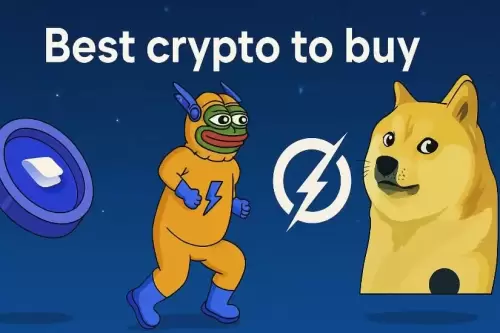 |
|
 |
|
 |
|
 |
|
 |
|
 |
|
 |
|
 |
|
 |
|
 |
|
 |
|
 |
|
 |
|
 |
|
 |
|
Cryptocurrency News Articles
Three years after the failure of Diem, Meta is returning to the crypto universe. This time, the company is exploring the use of stablecoins to pay creators on its platforms.
May 10, 2025 at 03:05 pm

Three years after the failure of Diem, Meta is returning to the crypto universe. This time, the company is exploring the use of stablecoins to pay creators on its platforms.
The goal is to integrate existing assets, such as Circle’s USDC or Tether’s USDT to enable global payments. A discreet but ambitious return of Meta to crypto.
After the failure to launch Diem as a global digital currency, Meta is opting for a more pragmatic approach. The company is aiming to integrate existing stablecoins for global payments on its platforms. This marks a clear break with the initial ambition to create a proprietary cryptocurrency.
Rather, the company is showing interest in tokens already widely used and recognized by financial institutions. This strategy aligns with the integration of decentralized technologies that Meta has been developing in recent years.
The arrival of Ginger Baker as the head of this initiative underscores its importance. Formerly of Plaid and a member of the Stellar Foundation board, she represents a commitment to anchoring the project within decentralized finance standards.
Meta is now relying on crypto infrastructure to strengthen its social platforms without provoking the same resistance it faced during its Libra campaign.
Why are stablecoins attracting Meta again?
Meta’s use of stablecoins fulfills several strategic objectives. It enables optimization of cross-border transfers by bypassing costly and slow traditional banking networks.
For a company like Meta, connecting billions of users and facilitating diverse content formats, the advantages are many.
Moreover, by targeting USDC and USDT, Meta relies on assets already widely adopted, facilitating their integration without requiring complex learning. The company thus equips itself with a stable, digital, and global payment method, without incurring the political risks of a private currency. The model evolves: from currency issuance to facilitating crypto liquidity.
A crypto strategy at the crossroads of regulation
Meta’s return to the digital asset universe faces a shifting regulatory environment. In the United States, the GENIUS law, which aimed to regulate stablecoins and make them a lever of dollar’s international influence, was recently blocked in the Senate.
This legislative deadlock reflects the political tensions surrounding these new financial instruments. Meta, which already saw its Libra project strangled by authorities, seems to have learned lessons.
By opting for crypto tokens already compliant, it limits its direct exposure. However, legal uncertainties remain: any regulatory changes could slow down or condition the deployment of these payment systems.
Meta’s strategy will have to contend with these constraints to endure.
What are the stakes for content creators?
Integrating stablecoins opens new prospects for content creators, especially in emerging countries. Where banking systems are failing or absent, receiving payments in stable crypto could transform access to monetization.
This would allow Meta to:
In this logic, Instagram, Facebook, or Threads could become channels for cross-border payments. Crypto imposes itself as a lever of financial inclusion by enabling creators to monetize without a traditional bank account.
Meta could thus extend its influence, not only social but also economic, by becoming the interface for distributing digital revenues worldwide.
A few months after a shareholder proposed Meta invest its treasury in bitcoin, it now relies on stablecoins as an integration strategy. This repositioning marks an evolution in tech: integrating into the crypto ecosystem rather than competing with it. A dynamic that could transform social networks into key players of digital finance and Web3.
Maximize your Cointribune experience with our "Read to Earn" program! For every article you read, earn points and access exclusive rewards. Sign up now and start earning benefits.
Disclaimer:info@kdj.com
The information provided is not trading advice. kdj.com does not assume any responsibility for any investments made based on the information provided in this article. Cryptocurrencies are highly volatile and it is highly recommended that you invest with caution after thorough research!
If you believe that the content used on this website infringes your copyright, please contact us immediately (info@kdj.com) and we will delete it promptly.





























































